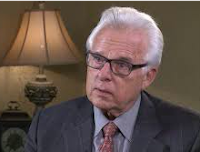Press release from: The Association of Palliative Medicine (UK)
Date: Wednesday 26th January 2022
The public
are at risk of being “scared” into supporting assisted suicide and
euthanasia, because of a handful of hard cases, exaggerated reporting, and a
lack of accurate information about palliative care, warn end of life doctors.
The claims are contained in a new study from the Association of Palliative Medicine (APM), which surveyed its members at end of last year.
The survey found high levels of concern among end-of-life doctors, who
believe that there is too great a focus by some media on the “negative"
and "traumatic" while ignoring "good palliative care and good
deaths".
Asked, given the
work you do, do you feel there has been enough press coverage of good deaths?
nearly nine in 10, (87 per cent) answered No,
while just one in 13, (7.5 per cent) said yes.
Given the opportunity to expand on their views one doctor added:
“I wish there would be a lot more publicity and promotion about all positive
experiences of death and dying that occur across the country… Most of the
time the bad ones hit the news and overshadow all the good work that's
carried out by palliative care teams”,
Another added:
“There has been huge
bias in reporting misery of deaths and less on good palliative care and good
deaths”. While a third suggested the current campaign to legalise assisted
suicide and euthanasia was “generating fear”.
The survey found doctors were alarmed at common misconceptions
about palliative care in the UK. Asked, would
you say that some patients and families think you are already practising
covert euthanasia?, two thirds, (67.62 per cent) answered yes definitely or yes probably. By contrast,
fewer than one in five (16.8 per cent) answered probably not and just 8 per cent answered Definitely not.
A majority of APM members also believe that the combination of
these factors are scaring the British public into supporting assisted suicide
and euthanasia, which is unnecessary in a clinical context and would alter
the nature of palliative care.
 |
Dr Amy Proffitt
|
Dr Amy Proffitt, Chair of the APM commented:
“As the
representative body for doctors who provide palliative care in hospitals,
hospices, primary care and other settings, our members are deeply concerned
at the way a small section of the media has painted a grossly misleading
picture of palliative care in this country. Stories about good deaths,
available treatments and how to access end-of-life care are largely
sacrificed in favour of those that focus on negative outcomes, which
unfortunately are scaring vulnerable patients. This is then compounded by
failing to ask why these issues occurred. For example, was the patient able
to access all the services they needed? For any clinician, this is the
obvious first question, because we know that around one in four people who
would benefit from palliative care do not receive it.”
The APM is releasing the report ahead of an unprecedented vote
in parliament later today, where a Conservative peer seeks to legalise
assisted dying via an amendment to the Health and Care Bill.
Critics of the amendment including palliative doctors and
disability rights groups have pointed to the dangers of changing the law and
how it would represent a dramatic change to the way doctors and nurses treat
and care for people. They point to examples in the US and Europe where
safeguard have been eroded or ditched over time and where the so-called right
to die become a duty to die. In the US State of Oregon, for example, six in
ten (59 per cent) of those ending their lives in 2019 cited the fear of being
a burden on their families, friends and caregivers as a reason for seeking
death and a further 7.4 per cent cited financial worries. While in Canada,
1,400 people who were euthanised last year cited loneliness as a reason for
their decision.
Dr Proffitt continued:
“The message from our member is clear and
overwhelming. We must redouble our effort to engage with our patients about
the benefits of palliative care and stop scaring vulnerable patients with
isolated and misleading reports about slow, miserable painful deaths.”
The study concludes:
“Based on the results of this survey, it is
clear not only that palliative care clinicians do not want to participate in
assisted suicide or euthanasia, but also that practitioners themselves remain
uncertain as to what the reality of legalising assisted suicide would mean
for them, their profession or for their patients…
“…There needs to be better awareness of how end-of-life care is
delivered, which may begin with an improved media narrative. The legalisation
of assisted suicide could be undermined significantly if patients were not
being frightened by hard cases in the media, and instead understood that, in
the majority of cases, good palliative care can facilitate a good death.”
For media inquiries, please contact Alistair Thompson on 07970 162225.
ENDS
Editors Notes
About the Association for Palliative Medicine
The APM is the world’s largest representative body for doctors
practicing or interested in Palliative Medicine. We aim to ensure that no one
need die in distress or discomfort for lack of access to adequate specialist
palliative care.
About the survey
All APM members were emailed a link to an online survey. 274
practitioners responded. The majority (94 per cent) deliver care in an NHS
setting, and 65 per cent have an NHS employment contract. Eight in 10 (77 per
cent) deliver care in an independent setting, such as a hospice.













